Search Engine Optimization (SEO) is the process of improving a website’s visibility on search engines like Google to drive more organic traffic. A crucial element of SEO is keyword density, which refers to the percentage of times a specific keyword appears in content. Understanding keyword density is key to creating content that ranks well without falling into the trap of keyword stuffing.
In this article, OctopusWriters will explore the role of keywords in SEO, the significance of keyword density, and how to optimize it for high-quality, SEO-friendly articles.
What is Keyword Density?
Keyword Density Formula

Keyword density refers to the ratio or percentage that indicates how frequently a specific keyword shows up on a webpage. It’s also commonly called KW density, keyword frequency, or key phrase density.
To calculate keyword density, take the total word count of the page and divide it by the number of times the target keyword appears. Then, multiply that result by 100 to get the percentage.
What Is TF-IDF?
TF-IDF, or “term frequency-inverse document frequency,” is a more sophisticated method for evaluating keyword density. This metric is commonly applied in information retrieval and text analysis to assess the significance of a particular term within a document. Search engines may use variations of TF-IDF to measure how relevant a page’s content is to a user’s search query. However, it’s important to remember that several other SEO factors also influence rankings.
Why is Keyword Density Important in SEO?
Keyword density is crucial to SEO as it directly impacts how relevant search engines consider a piece of content. Keeping an ideal keyword density helps ensure that search engine crawlers recognize the content as valuable and informative. In this section, we’ll delve into the reasons why keyword density matters for SEO.
Boosts Content Relevance
Including relevant keywords in your content helps search engines comprehend the context and focus of your article. When your target keyword appears at well-spaced intervals, it indicates to search engines that the content is rich with information related to the topic. This improves the chances of your page ranking higher in organic search results.
Enhances Readability and User Experience
Incorporating keywords strategically ensures a smooth and natural reading experience for your audience. Striking a balance between keyword usage and clear, flowing text makes it easier for readers to engage with complex subjects. Always prioritize user intent, ensuring that your keyword placement supports readability without sounding forced or unnatural.
Increases Search Engine Visibility
Optimizing your keyword density helps search engines recognize the most relevant pages for specific search terms. Well-optimized content is more likely to rank higher in search engine results pages (SERPs), leading to increased visibility and potentially boosting click-through rates (CTR). This, in turn, contributes to driving more organic traffic to your site.
In summary, maintaining proper keyword density helps to:
- Boost content relevance
- Improve readability and user experience
- Enhance visibility on SERPs
By carefully monitoring your keyword density, you maximize your content’s appeal to both human readers and search engine algorithms, which is essential for effective digital marketing today.
What Is a Good Keyword Density?
While there are no strict guidelines for keyword density beyond the common advice to avoid keyword stuffing, many SEO experts recommend using roughly 1-2 keywords for every 100 words of content. This equates to a density of around 1-2%.
Your content may perform similarly with slight variations in keyword density, but the general consensus is that search engines like Google tend to favor content with a density around 0.5%.
It’s also important to emphasize the use of keyword variants — terms and phrases that are closely related but not identical to your main keyword. For example, if your website sells outdoor lighting solutions, your primary keyword might be “outdoor lighting.” Overloading your pages with repeated mentions of this keyword can actually hurt your SEO performance instead of helping it.
Instead, focus on keyword variants that are related to your main term. In the case of “outdoor lighting,” alternatives like “garden lighting,” “patio lighting,” “deck lighting,” or “landscape lighting” can help improve your rankings without triggering keyword-stuffing penalties.
Not sure which variants work best for your site? Check out the “searches related to” section at the bottom of Google’s search results page for your primary keyword. Google has invested heavily in understanding search intent, so the related searches section is a great resource for finding terms that are closely connected to your main keyword.
How to Optimize Keyword Density for Better SEO Performance
Optimizing your keyword density requires implementing smart strategies to naturally integrate targeted keywords into your content. Below are several techniques to enhance density without compromising the readability or quality of your writing.
Use Relevant Synonyms and LSI Keywords
Incorporating synonyms and Latent Semantic Indexing (LSI) keywords allows you to highlight your primary keywords while maintaining a smooth, natural writing flow. LSI keywords are related terms that search engines recognize to better understand the context of your main keyword. By using these alternatives, you increase your content’s relevance and avoid repetitive keyword usage that can result in keyword stuffing.
Write Comprehensive Content
Search engines tend to favor detailed articles that thoroughly address a topic, as they provide more value to users. Writing longer, in-depth content gives you more opportunities to include your primary keywords and their variations in a natural way.
- Focus on answering relevant questions or providing solutions to common problems.
- Use headings, bullet points, and numbered lists to organize information.
- Dive into different aspects of complex topics within each section.
By creating well-rounded content, search engines are more likely to view your article as authoritative, which can help improve your rankings.
Study Competitor Content
Analyzing the content of competitors who rank highly for your target keywords can provide valuable insights into effective density practices. Pay attention to:
- How often they use primary and related keywords.
- Where the keywords are placed within the content.
- Any unique angles or approaches they take to stand out in the industry.
Leverage this information to refine your own keyword strategy, but make sure your content remains original and not a direct copy of competitor material.
Update Existing Content
Regularly reviewing older content can help you find opportunities to improve keyword usage while keeping your articles current:
- Update outdated references or facts to reflect new developments in your field.
- Revise or expand sections that no longer provide sufficient information.
- Adjust keyword placement by introducing more LSI keywords and synonyms if the original content feels repetitive.
Consistently updating your content helps keep your density of keyword optimized and relevant over time.
Use Keyword Density Analysis Tools
Keyword density analysis tools help track how often your primary and secondary keywords appear in your content. These tools provide a breakdown of keyword frequency, including separate percentages for each term based on its prominence. Using these tools allows you to make informed adjustments, ensuring your content meets optimal density standards for better SEO performance.
By adopting these strategies, you can refine your density and enhance your content’s ability to rank well in search engine results while maintaining high-quality writing.
Common Mistakes Related to Keyword Density
When learning about keyword density, it’s easy to make mistakes that can harm your SEO efforts. Below are some of the most common pitfalls and how to avoid them to ensure your content remains both SEO-friendly and high quality.
Keyword Stuffing
One of the most frequent mistakes related to keyword density is keyword stuffing, which refers to overloading a webpage with excessive repetitions of a target keyword. While it may seem like repeating your keyword often will improve your page’s ranking, search engines like Google now penalize this practice. Keyword stuffing disrupts the natural flow of content, making it less engaging for readers, and can result in lower search engine rankings or even penalties.
To avoid keyword stuffing, aim to use your keywords organically. Your focus should be on providing valuable, informative content where keywords fit naturally within the text, rather than forcing them in for the sake of boosting keyword density.
Ignoring Synonyms and Variations
Another common mistake is ignoring the use of synonyms and keyword variations. Many content creators tend to overuse a single keyword, believing that repeating the exact phrase will improve SEO. However, search engines have evolved to recognize related terms and synonyms, thanks to advanced algorithms like Latent Semantic Indexing (LSI).
By integrating synonyms and keyword variations into your content, you not only maintain a more natural writing style but also expand your chances of ranking for different search queries. For example, if your target keyword is “keyword density,” you could also use phrases like “keyword frequency” or “keyword usage” to provide variety while maintaining SEO relevance.
Neglecting Content Quality
Focusing too heavily on keyword density can sometimes lead to a decline in content quality. When too much emphasis is placed on fitting keywords into the text, the overall readability and user experience may suffer. Readers are more likely to engage with content that flows naturally and offers valuable insights, rather than articles that feel forced or repetitive.
To avoid compromising your content’s quality, always prioritize writing for your audience first, with keyword density being a secondary consideration. Your main goal should be to create informative, engaging content that meets the needs of your readers, while seamlessly incorporating keywords where they naturally belong.
By avoiding these common mistakes, you’ll be able to improve your keyword density in a way that enhances both SEO performance and user experience, ultimately leading to higher-quality content.
Best Practices for Using Keyword Density Effectively
Although keyword density is no longer a direct ranking factor, following some best practices can still improve your content’s quality and SEO performance.
Don’t Aim for a Specific Keyword Density
There is no definitive “optimal” keyword density, and aiming for one won’t improve your rankings. In fact, focusing too much on keyword usage can have the opposite effect. This is because Google discourages artificially inserting keywords into a page, a tactic known as keyword stuffing. Such practices are seen as manipulative attempts to game the algorithm, often at the expense of the user experience — which is something Google prioritizes.
Google’s Webmaster Guidelines explicitly warn against filling pages with excessive keywords, as it can harm user experience and negatively affect your site’s ranking. This technique is considered black-hat SEO, which is no longer an effective strategy.
So, what should you do instead? The answer is simple: write naturally. While you should still mention your target keywords in your content, it typically happens organically as you cover the topic. There’s no need to overthink keyword density.
Focus on Comprehensive Topic Coverage
While Google no longer emphasizesdensity, it does focus on how thoroughly a topic is covered. Instead of repeating your main keyword multiple times, aim to provide well-rounded coverage of the subject. This involves addressing subtopics that users might expect to find when they search for your main keyword.
To identify potential subtopics, analyze top-ranking pages for your target keyword. Search for the keyword on Google, review the highest-ranking results, and take note of the common subheadings used. For example, if you are targeting the keyword “link building,” you may notice that many top articles include a subheading like “What is link building?”
Most articles also discuss the significance of link building and include a list of actionable link-building techniques that readers can implement. If you’re writing a piece on link building, these are essential subtopics you should address.
You can also utilize Ahrefs’ Content Gap tool to aid in your research. This tool automatically generates a list of keywords for which the selected pages rank. You can browse through this list to discover relevant subtopics.
Here’s how to do it:
Start by entering the URLs of three high-ranking pages into the Content Gap tool, switch to URL mode, and then click on “Show keywords.”
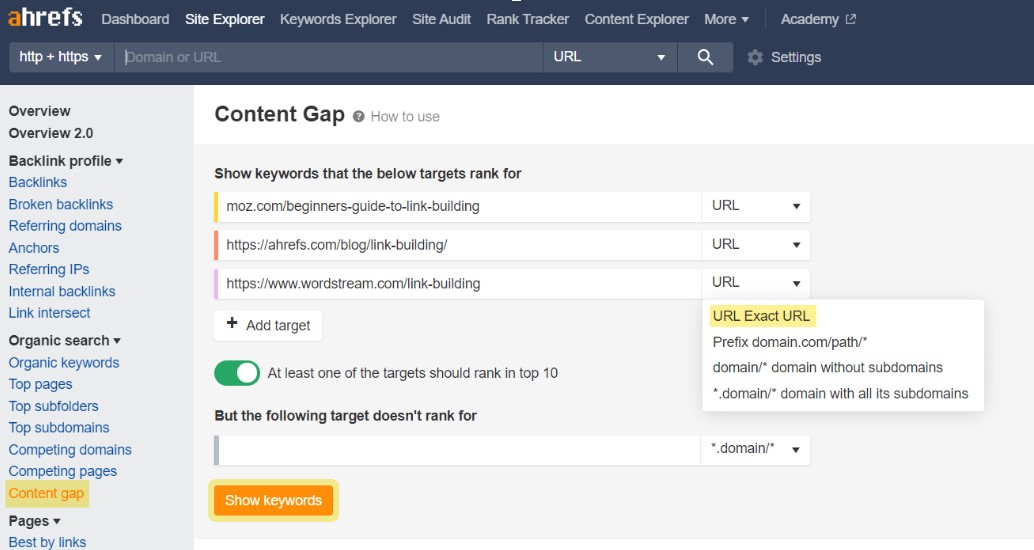
This will generate an extensive list of keywords. Review the list and select those that could serve as potential subtopics.
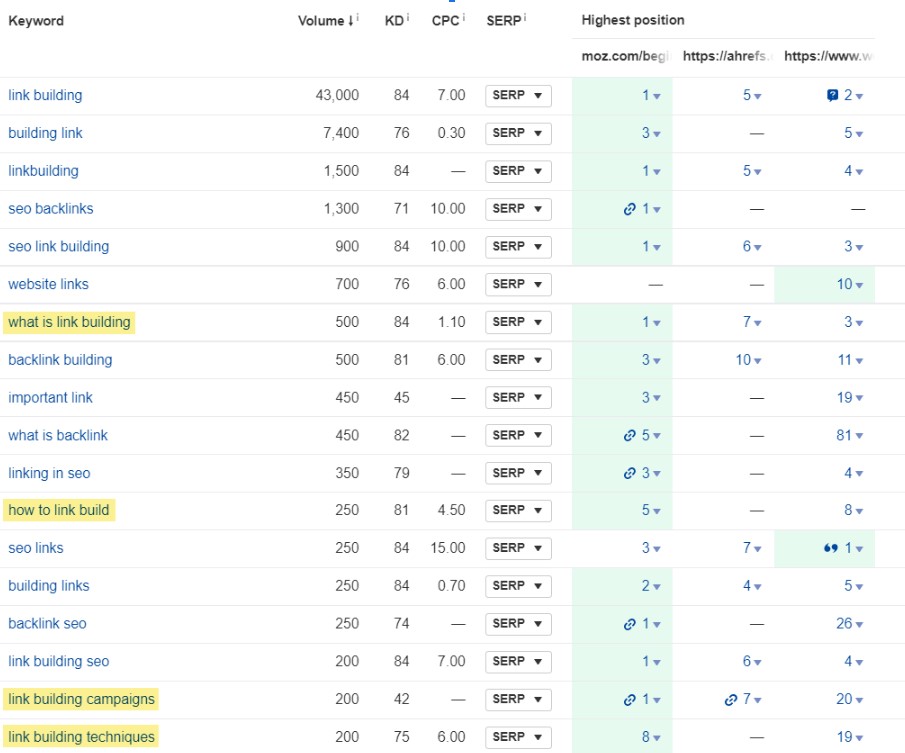
All the highlighted keywords in the previous example are excellent candidates for subtopics in an article about link building.
Incorporate Keywords in Strategic Locations
While it’s important not to overstuff your content with keywords, strategically placing your primary keywords in a few key areas can be beneficial. Consider including them in the following spots:
- Title tag
- H1 header
- URL
- Meta description
However, it’s crucial to ensure that the inclusion of your keyword feels organic in each of these instances. Avoid forcing it in simply for the sake of including it. Additionally, don’t hesitate to use variations of the keyword if they fit better.
For instance, in this article, we aimed for the keyword “how to get more YouTube subscribers.” However, since we structured the piece as a listicle, it made more sense to incorporate a number into the title. Thus, we opted for “9 Ways to Get More YouTube Subscribers” instead.
While this isn’t an exact match for the keyword, that’s perfectly fine. Google is intelligent enough to recognize that we’re discussing how to increase YouTube subscribers, so utilizing a variation won’t negatively impact our rankings.
Keyword density checkers
Although you can manually calculate keyword density by tallying the total word count and the number of keywords on each page of your website, this approach can become labor-intensive and resource-heavy as your site grows and the number of pages increases.
Keyword density tools can simplify this task. Here are some potential options:
SEO Review Tools Keyword Density Checker
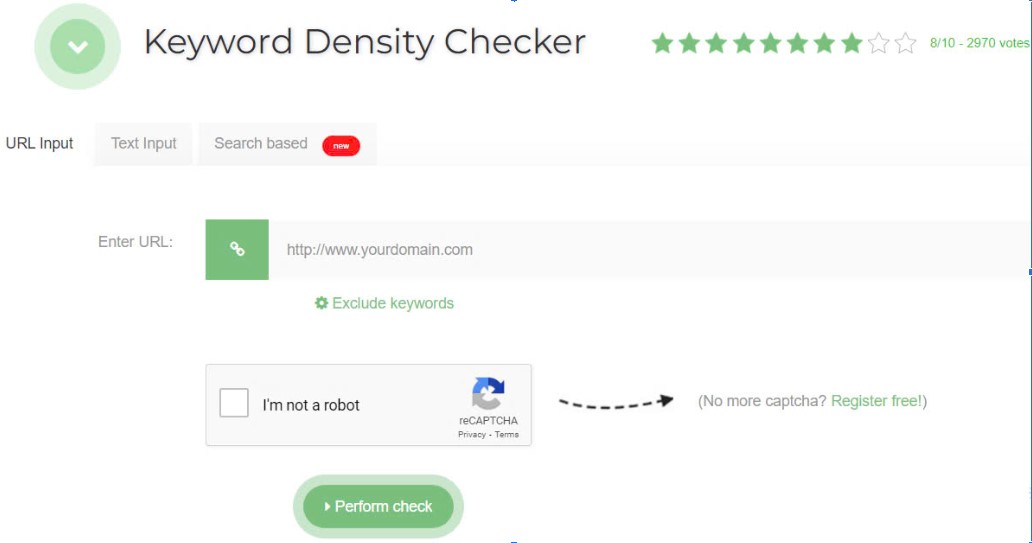
This free, browser-based tool allows you to simply enter your site URL or paste the text from a page, then complete the “I’m not a robot” captcha to check your keyword density. While it doesn’t provide as detailed an analysis as some of the other tools listed, it’s a convenient option for getting a general overview of your current density.
Why We Recommend It
The keyword density checker from SEO Review Tools features a color-coded warning system that highlights keywords with an unusually high frequency, making it easy to identify which ones may need to be reduced. It also offers a breakdown of keyword occurrences by word count and gives you the option to exclude specific phrases.
SEOBook Keyword Density Analyzer
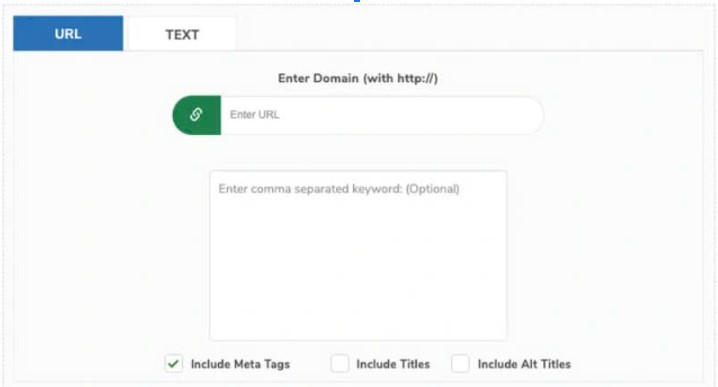
Like the previous tool, the SEOBook Keyword Density Analyzer is also free, though it does require you to create an account for access. In addition to providing basic keyword density reports, this tool allows you to search for your target keywords on Google, retrieve data from five of the top-ranking pages that use the same keywords, and analyze how your keywords compare.
Why We Recommend It
The SEOBook keyword density analyzer offers the option to incorporate meta information and exclude “stop words,” which are commonly used terms like “does,” “a,” “the,” and others. Furthermore, you can specify a minimum word length, enabling you to focus only on words that meet your chosen character count criteria.
Copywritely Keyword Density Checker

Copywritely’s keyword density checker highlights your top keywords by their density and uses color coding to indicate terms that appear frequently. While this tool is somewhat limited compared to others—lacking options to exclude stop words or include meta descriptions—it serves as an excellent introductory tool.
Why We Recommend It
The straightforwardness and ease of use of Copywritely make it a solid choice for those seeking a quick, visual assessment of keyword density. You also have the option to create a Copywritely account to identify and rectify any errors.
Semrush’s On-Page SEO Checker
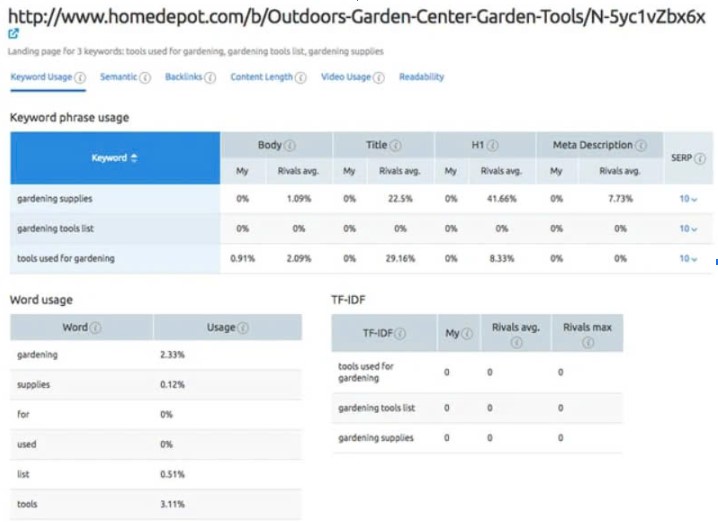
Semrush offers a robust on-page SEO checker that features a keyword density tool called “keyword phrase usage.” In addition to evaluating keyword density, this tool provides automated SEO audits and reports, assessments for titles and metadata, backlink prospecting tools, and comprehensive site crawls, scans, and reports. It also enables you to compare your keyword density with that of your competitors. However, this service comes at a premium cost, starting at $119.95 per month.
Why We Recommend It
Semrush is more than just a keyword density checker; it’s a comprehensive SEO tool that aids in all facets of on-page SEO, including competitive analysis. You can see how often competitors utilize specific keywords, allowing you to align your performance with industry standards.
Small seo tools density checker
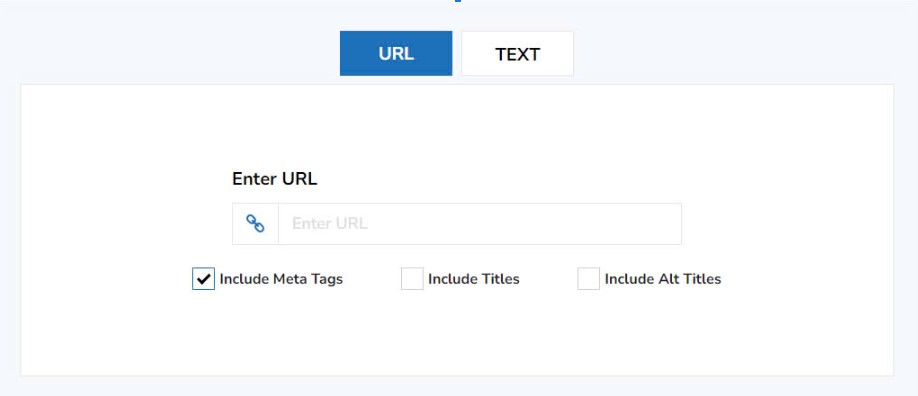
Small SEO Tools offers a straightforward keyword density checker that enables users to assess the frequency of their target keywords within a piece of content. This tool provides a simple interface where you can paste your text or enter a URL to receive an immediate analysis of keyword usage. It displays the top keywords along with their respective densities, allowing you to identify which terms are overused or underutilized. While it doesn’t offer advanced features like some premium tools, its accessibility makes it an ideal choice for beginners or those looking for quick insights.
Why We Recommend It
The strength of the Small SEO Tools keyword density checker lies in its user-friendly design and ease of access. It allows users to quickly gauge keyword performance without the need for an account or subscription, making it a great option for anyone wanting to enhance their content quickly. By providing a clear overview of keyword distribution, this tool helps users make informed adjustments to improve their on-page SEO and align better with best practices.
Keyword Density – Frequently Asked Questions
How should I check keyword density?
You can evaluate the density of your content by utilizing an online keyword density checker. There are numerous free tools available for this purpose. Simply search for “keyword density checker” on Google, and you’ll discover a variety of options to choose from.
That said, since keyword density isn’t particularly significant, it’s generally unnecessary to conduct this check. The primary reason for assessing keyword density would be if you’re collaborating with freelance writers and want to verify that they haven’t engaged in keyword stuffing.
How to calculate keyword density?
You can manually calculate keyword density using the following formula:
[number of keywords] / [total number of words] x 100
That said, a faster approach is to simply paste your text into one of the numerous free online keyword density checkers available.
What percentage of keyword density is too high?
There isn’t a definitive threshold for what constitutes excessively high density. As long as you avoid keyword stuffing, you should be in good shape.
However, if your keyword density exceeds 2%, it’s wise to revisit your content to ensure it flows naturally. Make any necessary edits to improve readability.
Why calculate keyword density with an online calculator?
If manually calculating your density of keyword is straightforward, why opt for a keyword density calculator?
It’s efficient: While determining the density manually for a few pages might not take long, auditing your entire website can become tedious as you’ll be doing the same calculations repeatedly. A density calculator allows you to swiftly assess the density of multiple pages within just minutes.
It’s precise: You won’t need to worry about miscounting keywords or the total word count in your content. Using a density calculator guarantees that the figures in your calculations are entirely accurate. You can trust that the math will always be correct!
How much keyword volume is good?
If you’re looking for a clear answer, a solid keyword search volume falls between 100 and 1,000 searches per month, as this range is likely to generate a healthy amount of organic traffic. However, what constitutes a “good” keyword volume can vary based on several factors, such as search intent, the industry, seasonal trends, and the level of competition, among others.
What keyword density is good for 500 words?
Typically, a density between 1% and 3% is regarded as optimal for SEO. This implies that for a webpage containing 500 words, you should strive to incorporate your target keyword or phrase between 5 and 15 times.
What is 1.5 keyword density?
Keyword density refers to the frequency at which a particular search term occurs in relation to the overall word count of the text. For example, if a keyword appears three times in a document of 200 words, the density would be 1.5%.
What is the keyword density for 1,000 words?
In a 1,000-word blog post, you would typically incorporate your main keyword around 10 to 20 times. Personally, I prefer to stay towards the lower end of that spectrum. The density encompasses not only your written content but also alt texts, meta titles, and more. To determine the optimal frequency for your primary keyword, you can search for the keyword phrase you’re targeting on Google.
Conclusion
In conclusion, OctopusWriters helps you understand that the keyword density is crucial for optimizing your content and improving its visibility in search engine results. By grasping the significance of keyword usage and maintaining an appropriate balance, you can enhance the relevance of your articles and support their ranking potential. However, it’s essential to prioritize creating valuable content that meets the needs of your audience. By combining quality writing with SEO best practices—such as optimal density of your keyword—you’ll not only satisfy search engines but also provide a rewarding experience for your readers. Focus on delivering informative and engaging content, and your SEO efforts will naturally follow suit.

